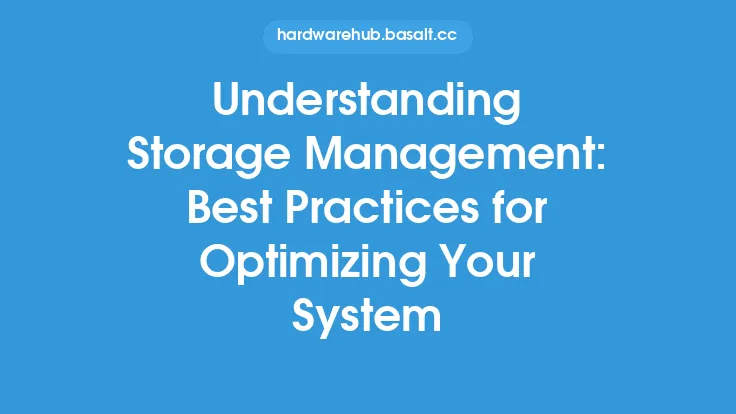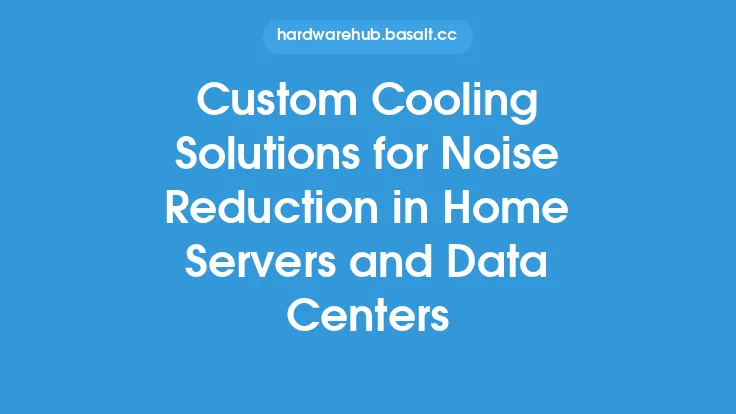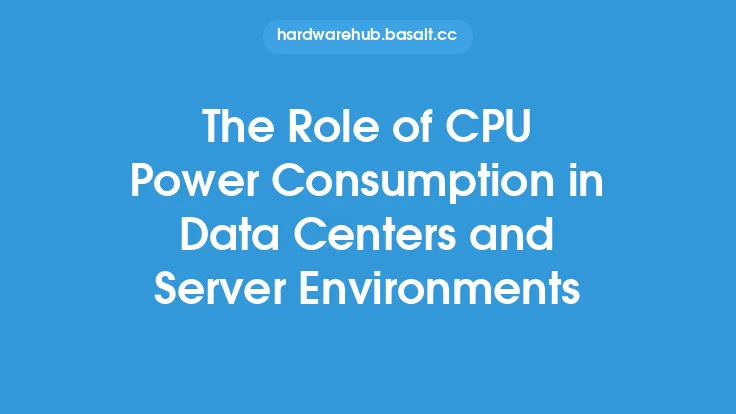Thermal management is a critical aspect of data center and server room design, as it directly impacts the performance, reliability, and energy efficiency of the equipment housed within. As the density of computing equipment continues to increase, the need for effective thermal management strategies has become more pressing. In this article, we will explore the best practices for thermal management in data centers and server rooms, highlighting the key considerations, design principles, and technologies that can help minimize heat-related issues and optimize overall system performance.
Introduction to Thermal Management in Data Centers
Data centers and server rooms are unique environments that require specialized thermal management solutions. The high concentration of heat-generating equipment, such as servers, storage systems, and network gear, can lead to significant thermal challenges. If left unaddressed, these challenges can result in reduced equipment lifespan, increased energy consumption, and decreased system reliability. Effective thermal management is essential to mitigate these risks and ensure the smooth operation of critical infrastructure.
Assessing Thermal Management Requirements
Before designing a thermal management system, it is essential to assess the specific requirements of the data center or server room. This involves evaluating the heat load of the equipment, the available cooling capacity, and the desired temperature and humidity ranges. A thorough understanding of the thermal management requirements will help determine the most suitable cooling solutions and ensure that the system is properly sized and configured.
Cooling System Design Principles
A well-designed cooling system is critical to effective thermal management in data centers and server rooms. The following design principles should be considered:
- Airflow management: Proper airflow management is essential to prevent hot air from recirculating and to ensure that cool air is delivered to the equipment.
- Cooling capacity: The cooling system should be sized to meet the total heat load of the equipment, with a suitable margin for redundancy and future expansion.
- Temperature and humidity control: The cooling system should be designed to maintain a consistent temperature and humidity range, typically between 18°C and 27°C (64°F and 81°F) and 40% to 55% relative humidity.
- Redundancy and failover: The cooling system should be designed with redundancy and failover capabilities to ensure continuous operation in the event of a component failure.
Cooling Technologies for Data Centers
Several cooling technologies are available for data centers and server rooms, each with its own advantages and disadvantages. Some of the most common cooling technologies include:
- Air-side cooling: This involves using air to cool the equipment, either through direct expansion or chilled water systems.
- Water-side cooling: This involves using water to cool the equipment, either through direct expansion or chilled water systems.
- Liquid cooling: This involves using a liquid coolant to cool the equipment, either through direct contact or indirect heat transfer.
- Free cooling: This involves using outside air or water to cool the equipment, either through direct expansion or heat exchangers.
Best Practices for Thermal Management
To ensure effective thermal management in data centers and server rooms, the following best practices should be followed:
- Monitor temperature and humidity: Continuously monitor temperature and humidity levels to ensure that they are within the recommended ranges.
- Maintain equipment: Regularly maintain equipment to prevent dust buildup and ensure that air filters are clean and functioning properly.
- Optimize airflow: Optimize airflow to prevent hot air from recirculating and to ensure that cool air is delivered to the equipment.
- Use thermal modeling tools: Use thermal modeling tools to simulate and optimize thermal management systems.
- Implement energy-efficient cooling: Implement energy-efficient cooling solutions, such as free cooling or liquid cooling, to reduce energy consumption and minimize environmental impact.
Thermal Management Considerations for High-Density Equipment
High-density equipment, such as blade servers and high-performance computing systems, requires specialized thermal management solutions. The following considerations should be taken into account:
- Increased heat load: High-density equipment generates more heat per unit area, requiring more advanced cooling solutions.
- Reduced airflow: High-density equipment can restrict airflow, making it essential to optimize airflow and use advanced cooling technologies.
- Increased temperature gradients: High-density equipment can create significant temperature gradients, requiring more advanced thermal management solutions to maintain a consistent temperature range.
Conclusion
Thermal management is a critical aspect of data center and server room design, requiring careful consideration of the unique thermal challenges and requirements of these environments. By following best practices, such as monitoring temperature and humidity, maintaining equipment, optimizing airflow, and implementing energy-efficient cooling solutions, data center and server room operators can ensure the smooth operation of critical infrastructure and minimize heat-related issues. As the density of computing equipment continues to increase, the need for effective thermal management strategies will only continue to grow, making it essential to stay informed about the latest technologies and design principles.





